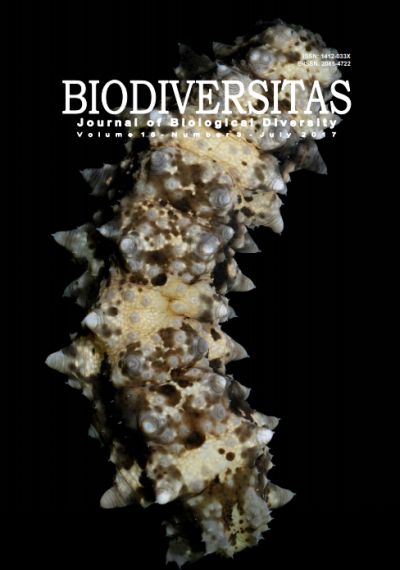The landscape structure change of the tropical lowland forest and its possible effect on tree species diversity in South Sumatra, Indonesia
##plugins.themes.bootstrap3.article.main##
Abstract
Zulfikhar, Zulkifli H, Kadir S, Iskandar I. 2017. The landscape structure change of the tropical lowland forest and its possible effect on tree species diversity in South Sumatra, Indonesia. Biodiversitas 18: 916-927. The forest fragmentation is a spatial structure change, resulted in a reduction of the number and size of forest patches, and a subdivision and breaking up of the areas into smaller parcels. The key scientific challenges concern the significant gaps exist in our ability to understand the relationships between landscape structure, biodiversity and the output of ecosystem services at different spatial and temporal scales. The objective of this study was to examine the possible effect of changes in a spatial pattern of habitat against the changes of the tree species diversity. We apply a landscape structure analysis of the forest fragmentation, and then determine the principal component of the landscape metrics. We analyzed multitemporal satellite imageries from 1989 to 2013, that have been clipped as a sampling area. Thirty-two circular sampling areas with a radius of 2,500 meters were used. We conducted observations in 32 unit sample plots of biodiversity in the size of 20 meters by 50 meters, at a midpoint of the clip of area sampling. The results of a test of inter-correlation of all variable data showed that there were 15 of 23 landscape metrics of natural forest, reliable for the next analysis. We reduced the number of variables into three new variable groups using Principal Component Analysis (PCA). We produce three of six models of principal component multipleregression were significant (p < 0.05) to predict the composition and diversity of tree species caused by a change of landscape metrics, namely the species richness index, species equity index, and basal area of a tree stand. The prediction models are beneficial in the planning of biodiversity conservation and restoration of the fragmented natural forest.
